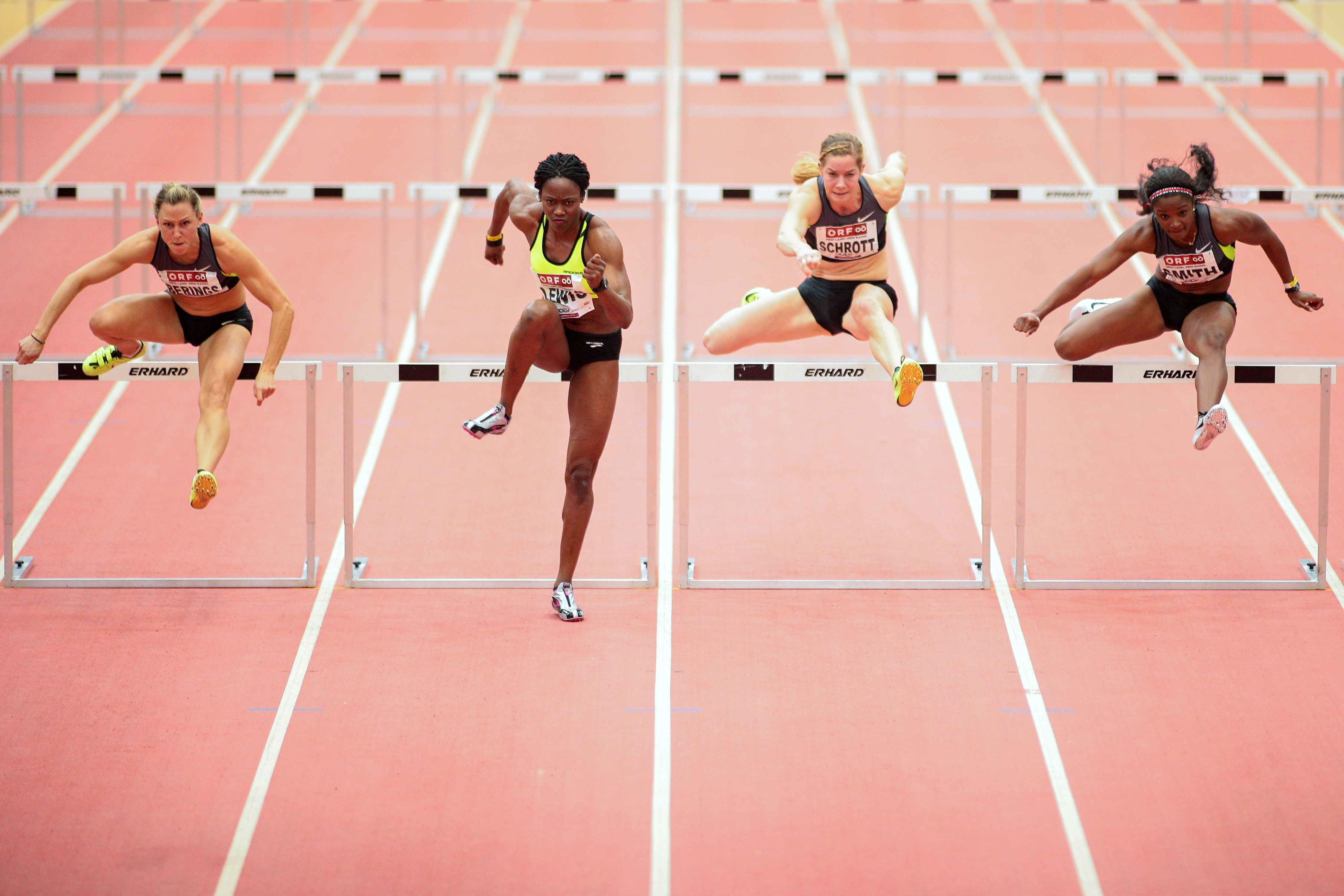Hurdling is a track and field race in which runners jump over fencelike obstacles called hurdles. Outdoor races have ten hurdles that stand at equal intervals on the track. Most indoor races have five hurdles.

There are two types of hurdle races: intermediate and high. Intermediate-hurdle races are 300 meters in high school and 400 meters in all other levels of competition. The hurdles are 36 inches (91 centimeters) high for men and 30 inches (76 centimeters) high for women. Outdoor high-hurdle races are 110 meters for men and 100 meters for women, and indoor high-hurdle races may be 50, 55, or 60 meters. In men’s competition, the hurdles are 42 inches (106 centimeters) high. They are 39 inches (99 centimeters) high for high school boys. High hurdles in women’s races are 33 inches (84 centimeters) high.
In men’s high-hurdle races, the first hurdle is 15 yards (13.72 meters) from the starting line in the 110-meter event. In the women’s high hurdles, the first hurdle is 13 meters from the starting line. In all intermediate-hurdle races, the first hurdle is 45 meters from the starting line.
In a hurdle race, runners must adjust their stride so that they clear the hurdle without breaking stride. The race begins from a sprinting position. Runners jump over the hurdle straight on. The lead leg goes over the hurdle first, and the other leg is brought up behind so it also clears the hurdle. Runners keep their speed and gain momentum and balance by thrusting one or both arms toward the lead leg. Runners drop the lead leg down as they bring their trailing leg through, so that they are in a running position as they finish jumping over the hurdle.
Hurdlers must run in lanes. They are disqualified if they allow a foot or leg to trail along the side of a hurdle or if they clear a hurdle that is not in their lane. Runners are not penalized for knocking down hurdles in their own lane.
